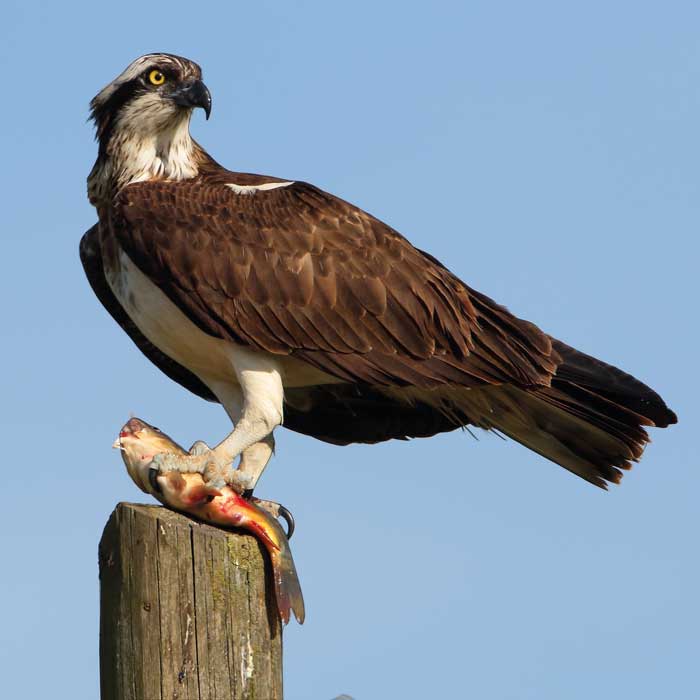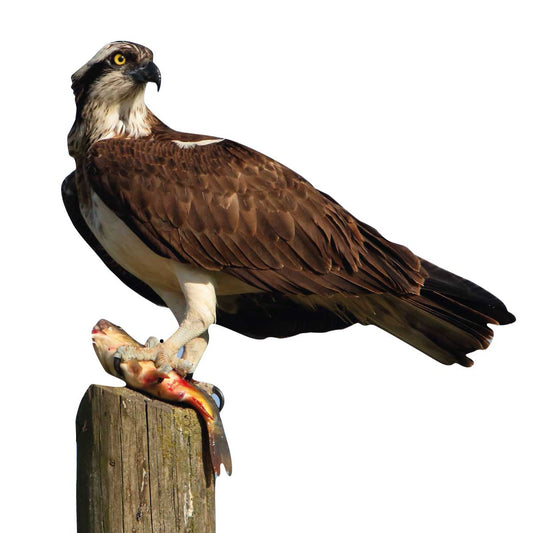
Osprey
The osprey, a specialised bird of prey, is a fascinating wild animal closely associated with water and fishing. This fact sheet provides a detailed overview of the biology and ecology of the osprey and highlights the importance of protecting its habitats and managing waters sustainably.
Osprey Products
-
Animal display osprey - outdoor set
No reviewsRegular price 67,70€Regular priceUnit price / per -
Animal display wild rabbit
No reviewsRegular price From 59,90€Regular priceUnit price / per
Profile: Osprey
-
Scientific classification
- Class: Aves (birds)
- Order: Accipitriformes (birds of prey)
- Family: Pandionidae (ospreys)
- Genus: Pandion
- Species: P. haliaetus (osprey)
-
Physical characteristics
- Size: Body length of 50-60 cm
- Wingspan: 145-170 cm
- Weight: 1-2 kg
- Special features: Large bird of prey with dark upper parts and white head and belly; sharp claws and powerful wings.
-
Habitat and distribution
- Common regions: North America, Europe, Asia, Africa, Australia
- Habitat: Waters with abundance of fish such as lakes, rivers, coasts; prefers open waters near forest areas.
-
Nutrition
- Diet: Piscivore
- Typical food: fish such as trout, salmon, perch, but also waterfowl and rodents.
-
Reproduction and lifestyle
- Breeding season: spring to summer
- Nest type: Large nests made of branches, often in treetops near water
- Number of eggs: 2-4 eggs per clutch
- Incubation period: Approx. 5-6 weeks
- Social structure: Usually in pairs, territorial during the breeding season.
-
Lifespan and protection status
- Life expectancy: Up to 20 years in the wild
- Threat status: Not threatened, but habitat loss and pollution may affect local populations.
- Conservation measures: protection and conservation of water bodies and wetlands, avoidance of disturbances in breeding areas, monitoring and research.


